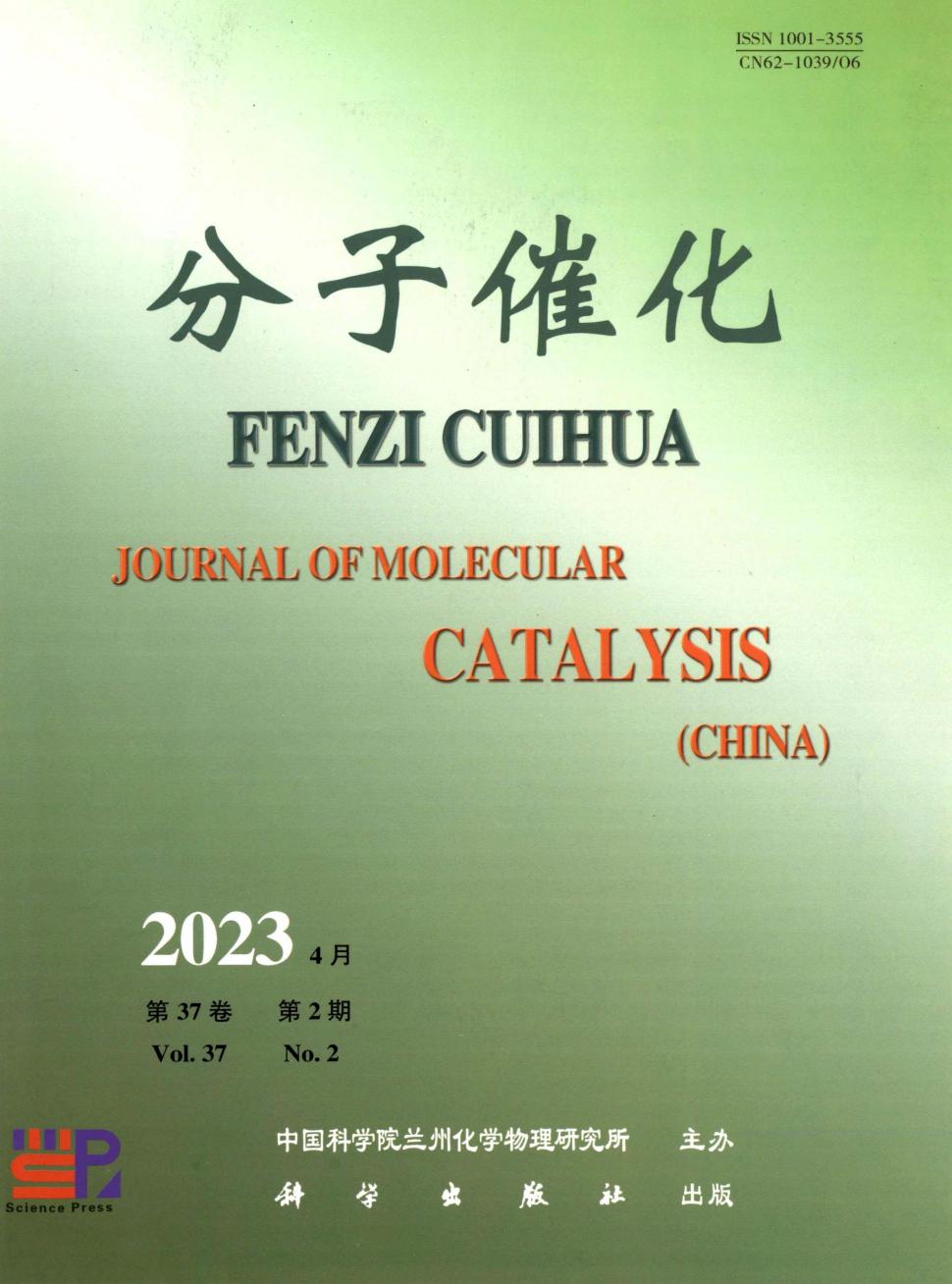Surface organometallic chemistry on zeolites: control of the pore opening of mordenite by grafting of thermally stable GeBu3 fragments
Q4 Chemical Engineering
引用次数: 4
Abstract
GeBu4 reacts at 250°C with the external silanols of two different mordenites (Si/Al = 11 or 40) to give the surface organometallic complex SiOGeBu3 1 which has been characterized by 13C CP-MAS NMR; 1 is able to discriminate sterically different alkanes such as n-hexane, 2-methyl-pentane, 2,3-dimethyl butane, 2,2,4-trimethyl pentane. Such discrimination is parallel to that already observed for SiOSnBu3 grafted on the same mordenites. Interestingly and in contrast to the behaviour of the grafted tin complex, 1 even after treatment at 400°C is still able to separate n-hexane from isooctane, a property ascribed to a steric molecular control of the Ge(Bu)3 fragment which has an exceptional thermal stability.
沸石表面有机金属化学:通过接枝热稳定GeBu3片段控制丝光沸石的开孔
GeBu4在250℃下与两种不同丝光沸石(Si/Al = 11或40)的外部硅烷醇反应,生成表面有机金属配合物SiOgebu31,该配合物已通过13C CP-MAS NMR表征;1能在空间上区分不同的烷烃,如正己烷、2-甲基戊烷、2,3-二甲基丁烷、2,2,4-三甲基戊烷。这种区别与已经观察到的SiOSnBu3嫁接在相同的正晶上的区别相似。有趣的是,与接枝锡配合物的行为相反,即使在400°C处理后,1仍然能够将正己烷与异辛烷分离,这一特性归因于Ge(Bu)3片段的空间分子控制,具有优异的热稳定性。
本文章由计算机程序翻译,如有差异,请以英文原文为准。
求助全文
约1分钟内获得全文
求助全文
来源期刊

分子催化
Chemical Engineering-Catalysis
CiteScore
1.50
自引率
0.00%
发文量
2959
期刊介绍:
Journal of Molecular Catalysis (China) is a bimonthly journal, founded in 1987. It is a bimonthly journal, founded in 1987, sponsored by Lanzhou Institute of Chemical Physics, Chinese Academy of Sciences, under the supervision of Chinese Academy of Sciences, and published by Science Publishing House, which is a scholarly journal openly circulated both at home and abroad. The journal mainly reports the latest progress and research results on molecular catalysis. It contains academic papers, research briefs, research reports and progress reviews. The content focuses on coordination catalysis, enzyme catalysis, light-ribbed catalysis, stereochemistry in catalysis, catalytic reaction mechanism and kinetics, the study of catalyst surface states and the application of quantum chemistry in catalysis. We also provide contributions on the activation, deactivation and regeneration of homogeneous catalysts, solidified homogeneous catalysts and solidified enzyme catalysts in industrial catalytic processes, as well as on the optimisation and characterisation of catalysts for new catalytic processes.
The main target readers are scientists and postgraduates working in catalysis in research institutes, industrial and mining enterprises, as well as teachers and students of chemistry and chemical engineering departments in colleges and universities. Contributions from related professionals are welcome.
 求助内容:
求助内容: 应助结果提醒方式:
应助结果提醒方式:


